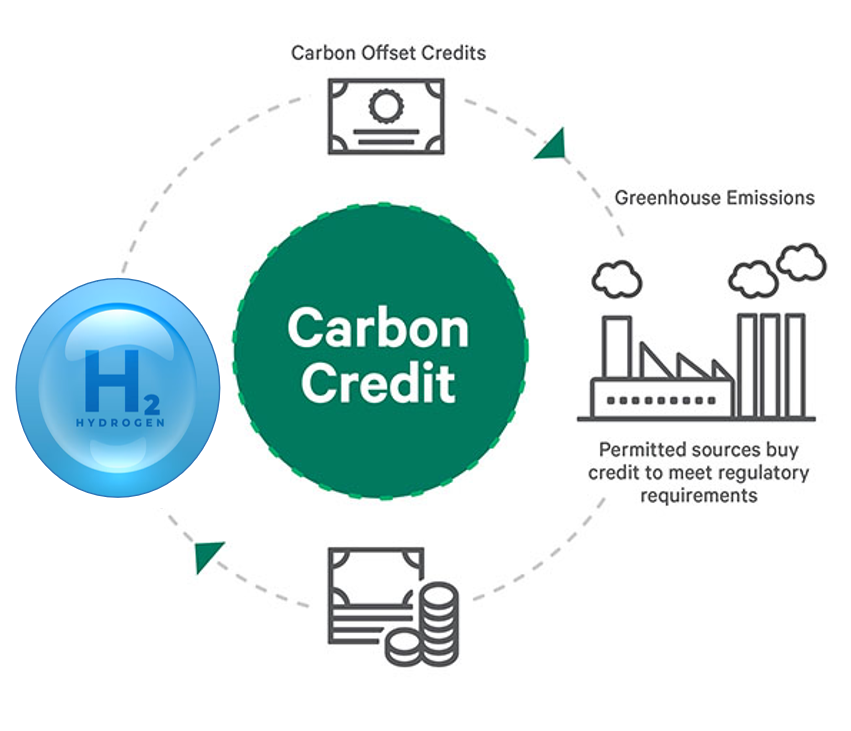Carbon Credit
•Traceable by weight
•rCB Recovered Carbon Black solid
•Landfill diversion GHG reduction
•35$ After Discount, 50$ Before Discount Per Ton
How Carbon Credits Work
Carbon credits are a market-based tool used to reduce greenhouse gas (GHG) emissions. They allow companies, governments, or individuals to offset their carbon footprint by purchasing credits from projects that reduce or remove emissions from the atmosphere.
Types of Carbon Credits
- Avoidance/Reduction Credits
- Issued for projects that prevent new emissions, such as renewable energy (wind, solar), energy efficiency, or methane capture.
- Removal Credits
- Earned by projects that capture and store carbon, such as reforestation, direct air capture (DAC), and soil carbon sequestration.
How the Carbon Credit Market Works
- Emission-Reducing Projects Get Certified
- Projects that reduce or remove carbon (e.g., reforestation, carbon capture, renewable energy) apply for certification from recognized organizations like:
- Verra (VCS – Verified Carbon Standard)
- Gold Standard
- Climate Action Reserve (CAR)
- American Carbon Registry (ACR)
- These projects undergo verification to ensure they meet strict standards.
- Based on the amount of CO₂ reduced or removed, they are issued carbon credits (1 credit = 1 metric ton of CO₂ equivalent avoided or removed).
- Projects that reduce or remove carbon (e.g., reforestation, carbon capture, renewable energy) apply for certification from recognized organizations like:
- Companies & Individuals Buy Credits
- Businesses and individuals looking to offset their emissions purchase credits from these projects.
- Some industries, like aviation and energy, have mandatory carbon offset programs, while others buy voluntarily to meet sustainability goals.
- Credits Are Retired or Traded
- Once a credit is used to offset emissions, it is "retired" (removed from circulation).
- Some companies trade credits on voluntary or compliance markets.
Benefits of Carbon Credits
 Encourages Emission Reductions
Encourages Emission Reductions
- Companies that produce high emissions are incentivized to cut back or pay for offsets.
 Funds Sustainable Projects
Funds Sustainable Projects
- Carbon credit sales support renewable energy, reforestation, and conservation projects.
 Corporate ESG & Sustainability Compliance
Corporate ESG & Sustainability Compliance
- Helps companies meet environmental, social, and governance (ESG) goals and regulatory requirements.
 Global Climate Action
Global Climate Action
- Enables wealth transfer to developing regions where carbon reduction projects often take place.
 Drives Innovation
Drives Innovation
- Promotes investment in new technologies like carbon capture and sustainable energy solutions.
Is It a Good Solution?
Carbon credits help reduce emissions, but they are not a complete solution. Companies must focus on reducing their direct emissions first and use offsets as a secondary measure. The effectiveness of carbon credits depends on strong standards, transparency, and real impact measurement.
Would you like insights on how companies can integrate carbon credits into their sustainability strategies?
Companies involved in chemical recycling can benefit from carbon credits, but it depends on the certification standards and the carbon savings their process achieves.
How Chemical Recycling Can Qualify for Carbon Credits?
Chemical recycling, also known as advanced recycling, breaks down plastic waste into raw materials that can be reused, reducing the need for virgin plastic production (which is carbon-intensive). Here’s how it fits into the carbon credit market:
- Avoidance of CO₂ Emissions
- Traditional plastic production from fossil fuels emits significant carbon.
- If chemical recycling reduces the need for virgin plastic, it can be eligible for carbon avoidance credits.
- Waste-to-Energy or Circular Economy Benefits
- Some chemical recycling processes convert plastic waste into fuels (like hydrogen, pyrolysis oil and recovered black carbon). If this replaces fossil fuels, it may qualify for carbon credits.
- However, credits are only issued if the overall carbon footprint is lower than conventional methods.
- Methane & Landfill Emission Reduction
- Diverting plastic from landfills prevents methane emissions and environmental degradation, potentially making these projects eligible for credits.
How Chemical Recycling Companies Can Earn Carbon Credits
- Get Certified by a Carbon Standard
- Apply for certification with recognized bodies like:
- Verra (Verified Carbon Standard – VCS)
- Gold Standard
- Climate Action Reserve (CAR)
- American Carbon Registry (ACR)
- They assess the life-cycle emissions of the recycling process to ensure a real reduction in CO₂.
- Apply for certification with recognized bodies like:
- Quantify & Verify Emissions Savings
- Companies need third-party verification to measure how much CO₂ their recycling process saves compared to traditional methods.
- Sell Carbon Credits to Businesses
- Once approved, chemical recycling companies can sell credits to corporations looking to offset their emissions.
